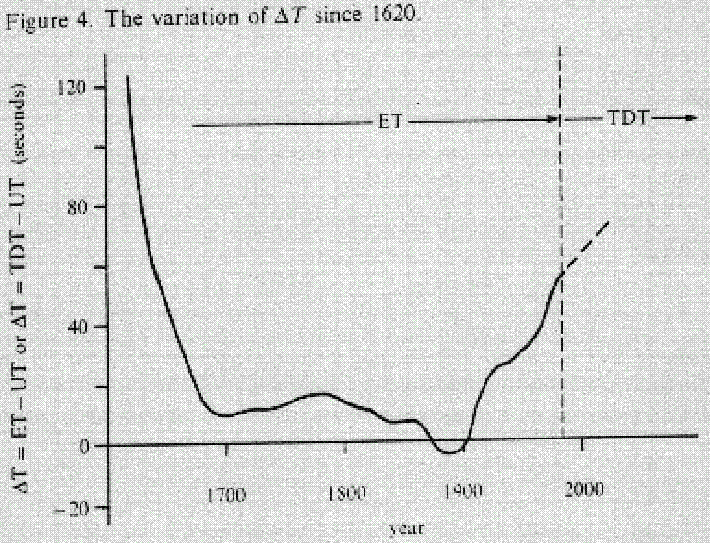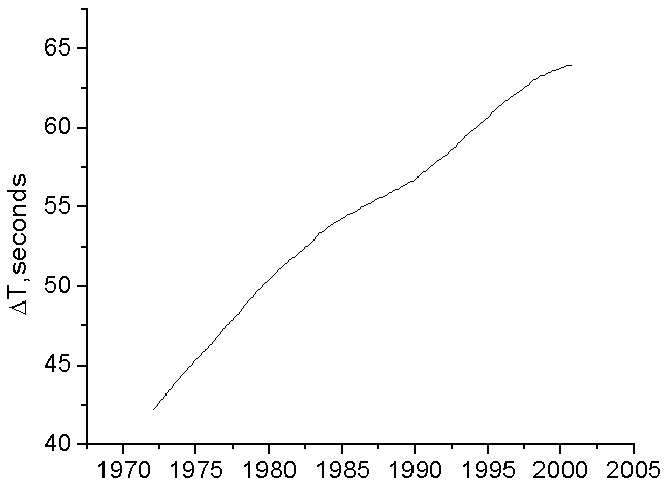
| |
 |
![]()
I believe that professional astronomers know very well about the recent slowing of the rotation of the Earth about its polar axis. I am not an astronomer and I have only book in my home on the subject: Practical Astronomy with your Calculator by Peter Duffett-Smith, Cambridge University Press, Cambridge, 1988. I was very surprised to find in this book a chapter 16 describing the phenomenon of the recent slowing of the Earth rotation in great details. The change of the Earth rotation of in this book was calculated from the motion of the Moon for old data (since 1620) or from the time measured by atomic clock (since 1984). For some unknown reasons the Earth rotation measured by the Moon clock was accelerating from the year 1620 to the year 1680. Then the Earth rotation was quite stable for more then two centuries. Suddenly, since the year 1900 the Earth rotation began slowing quite rapidly, and it is continuing slowing. In January 1986 the difference between ET (ephemeris time) or TDT (terrestrial dynamic time) and UT (universal time) was 54.87 seconds, UT being behind TDT; that is TDT-UT=Delta T=54.87 seconds.

I found that International Earth Rotation Service gives a table showing the Earth slowing data (Delta T) from January 1972 to January 2001 (monthly). In January 1, 2001 the slowing was 64.0908 seconds. The International Earth Rotation Service also updates these data weekly. Thus I was able to incorporate in this plot the slowing data including June 1 of 2001. The data shown in the Figure coincide exactly with the correspondent portion of the Figure 4 from the Peter Duffett-Smith's book. The very recent data from the International Earth Rotation Service show numbers which allow calculating Delta T for June 13, June 14, and June 20 of 2001:
June 13, 2001, Delta T = 64.208477 seconds
June 14, 2001, Delta T = 64.208550 seconds
June 20, 2001, Delta T= 64.209395 seconds

So, the change of Earth slowing during one day was 0.000073 second or 73 microseconds at that time; the change during one week was 0.000918 second or 918
microseconds. This very small daily change is very hard to measure with common time devices. I have learned from the International Earth Rotation Service web
page that their data are based on very accurate measurements of the Earth rotation using data from Very Long Baseline Interferometry (VLBI), Satellite Laser
Ranging (SLR), Global Positioning System (GPS) satellites, and Lunar Laser Ranging (LLR). Data are supplied by many organizations including U.S. Naval
Observatory, Paris Observatory, Institute of Applied Astronomy, St. Petersburg, and many other. Astronomical times are fully defined.
Offered by Jacob.